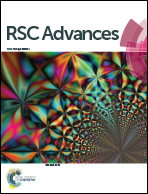Coaxial electrospun poly(lactic acid)/silk fibroin nanofibers incorporated with nerve growth factor support the differentiation of neuronal stem cells
Abstract
Coaxial electrospinning is an explicit method for encapsulation of protein drugs, and the process could preserve the bioactivity of the molecules. In this study, coaxial electrospinning was used to fabricate Poly(Lactic Acid)/Silk Fibroin/Nerve Growth Factor (PS/N) by encapsulating nerve growth factor (NGF) along with Silk Fibroin (SF) as the core of the scaffold. Air plasma treatment was applied to PS/N scaffold to improve the surface hydrophilicity without causing any damage to the nanofibers. Surface characterization of the plasma treated PS/N scaffold (p-PS/N) was carried out by Atomic Force Microscopy, X-ray Photoelectron Spectroscopy and water contact angle test. PC12 cells cultured on both PS/N and p-PS/N scaffolds using Differentiation Medium devoid of NGF expressed neurofilament 200 protein on day 8, suggesting the differentiation potential of PC12 on both the scaffolds. By day 11, the cells cultured on p-PS/N scaffolds using the Differentiation Medium devoid of NGF showed elongated neurites with the length up to 95 μm. Our results suggested the sustained release of NGF, thus demonstrating the fact that the bioactivity of NGF was retained. The p-PS/N scaffolds were able to support the attachment and differentiation of PC12 cells, with ability to function as suitable substrates for nerve tissue engineering.


 Please wait while we load your content...
Please wait while we load your content...